The Sikorsky H-5 was an early helicopter that saw extensive use during the Korean War.
It is also acknowledged as the first commercial helicopter under the designation of S-51.
Like everything the U.S. Air Force does, Im sure figuring that out was just crazy expensive.
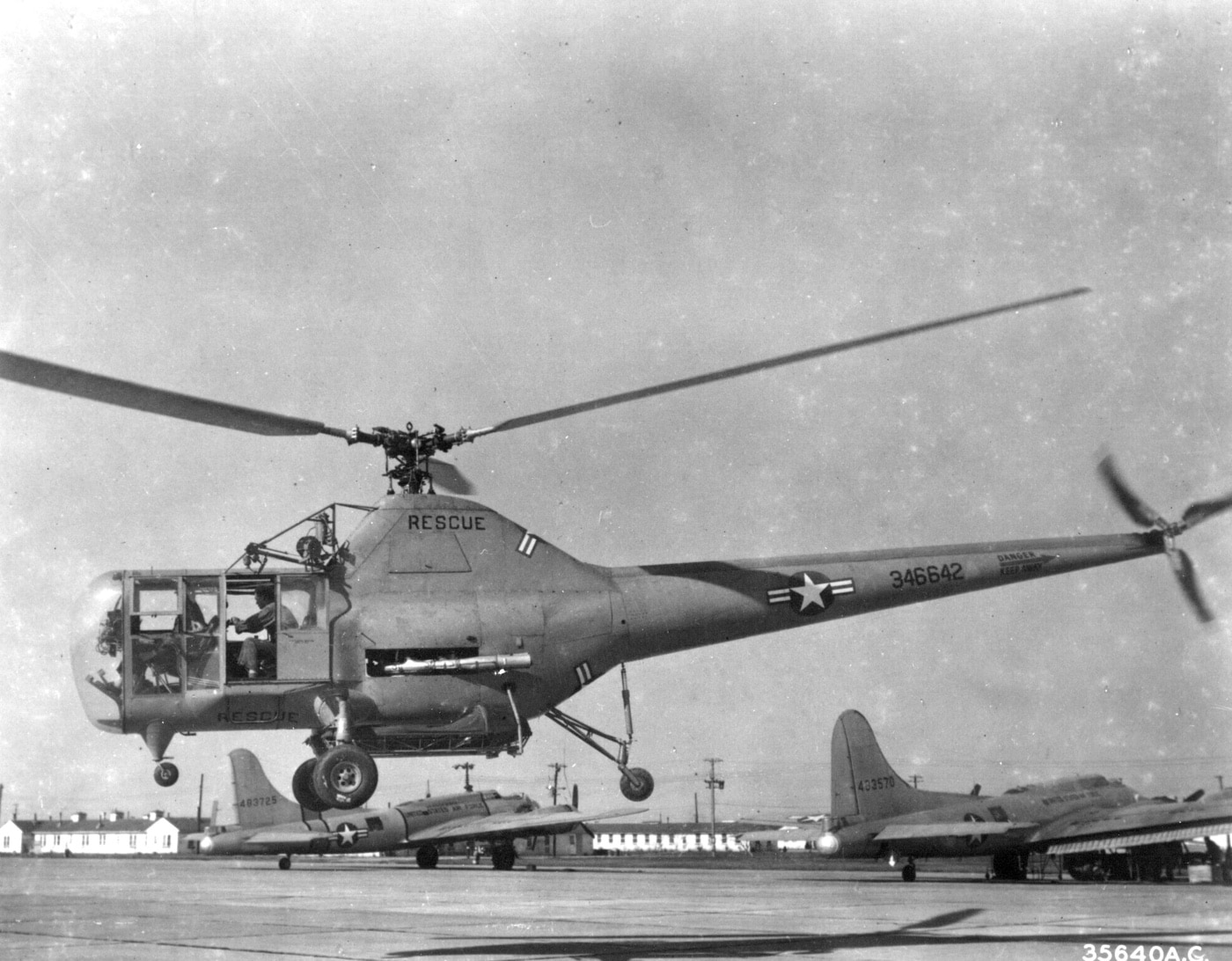
The Sikorsky H-5, originally designated the R-5 and launched in the mid-1940s, was later used extensively during the Korean War for rescuing downed pilots and formedevac flights.
However, I have read that grey is actually not the ideal color for high-performance tactical aircraft.
Supposedly the perfect color for such a machine is kind of pink.
The scientific principle behind that is called Rayleigh scattering, and it accounts for the skys distinctive blue color.
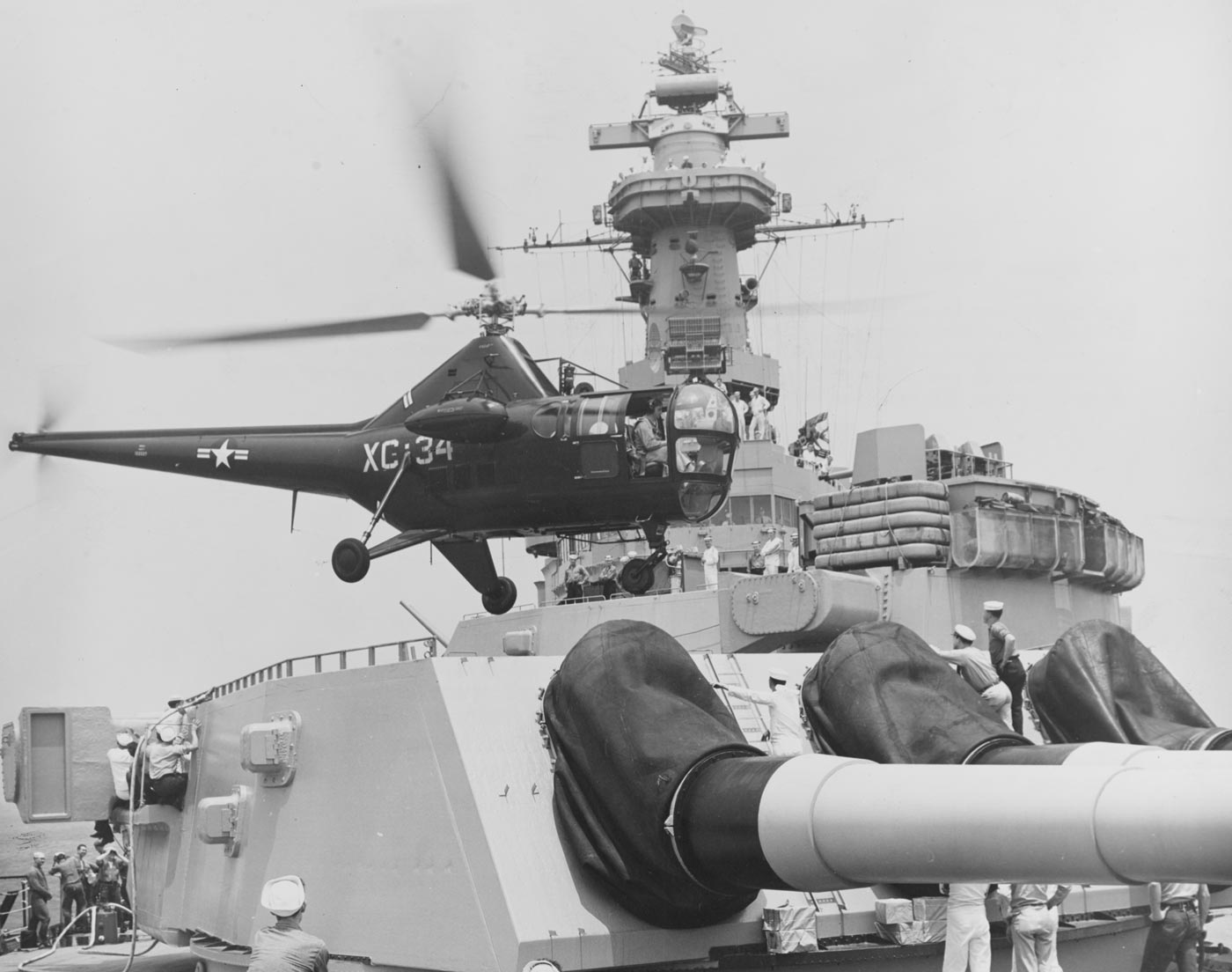
Sikorsky HO3S-1 helicopter, the U.S. Navy version of the H-5, lands on the forward 16″ gun turret of the USSMissouri(BB-63), anIowa-class battleshipduring a midshipmen’s cruise. Image: U.S. Navy
Who can blame them?
By extension, it has been reliably opined that real pilots also dont want to fly ugly airplanes.
Back in 1993, the Air Force embarked upon the Joint Strike Fighter (JSF) program.
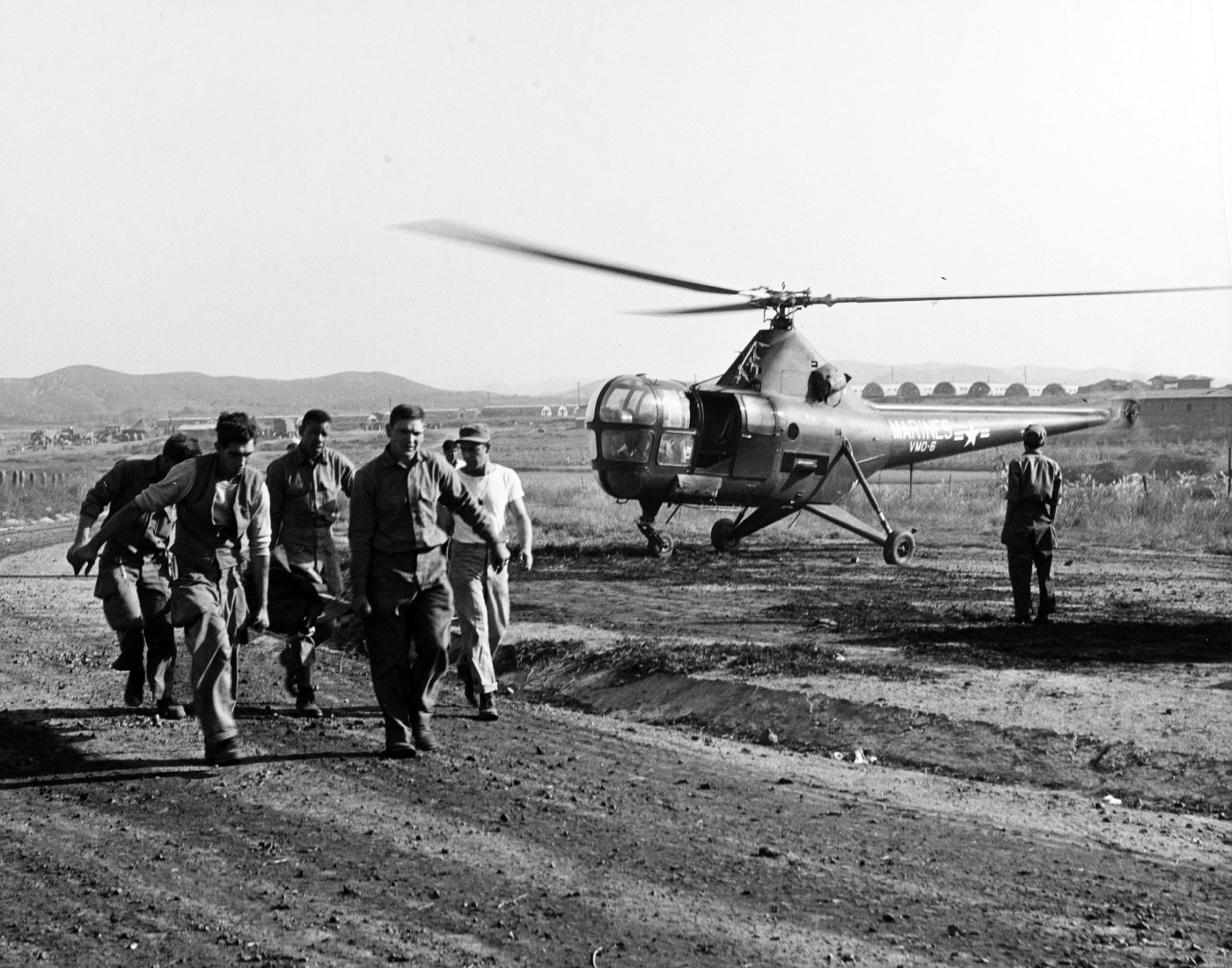
In 1950, Navy Corpsmen carry a wounded man from a U.S. Marine Corps HO3S-1 medevac helicopter to a military hospital during the Korean War. Image: U.S. Navy
A broad field was eventually winnowed down to the Lockheed X-35 and the Boeing X-32.
The X-35 eventually evolved into theLockheed Martin F-35stealth fighter, arguably the most advanced tactical jet in the world.
Thats really not hyperbole.
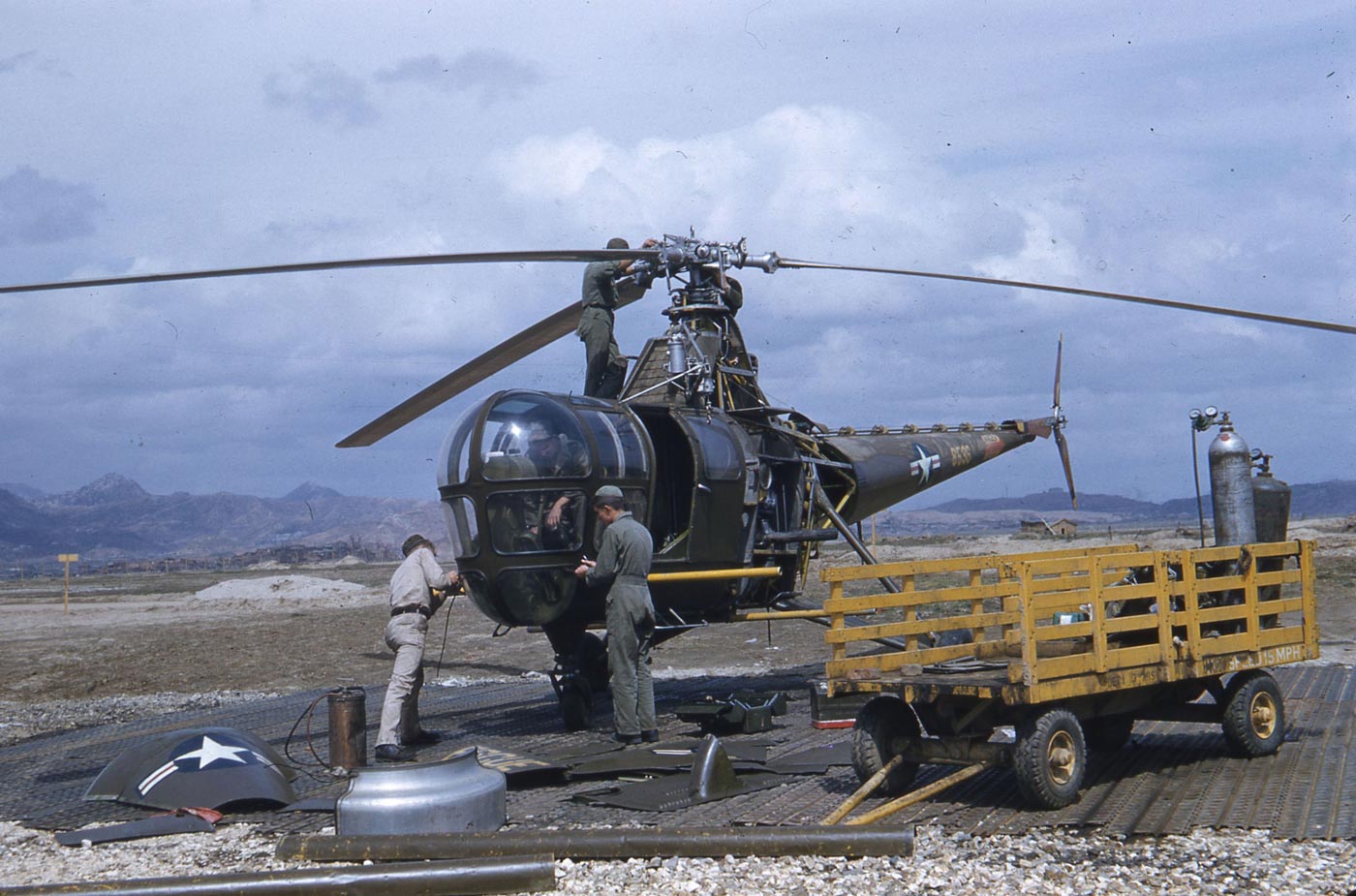
Technicians work on a Sikorsky H-5G on a helipad. The H-5G was a specialized rescue variant. Only 39 G models were built. Image: NARA
The X-35 looks sleek, svelte, and lethal.
By contrast, the X-32 looks like a gravid manatee.
The homely X-32 really never stood a chance.
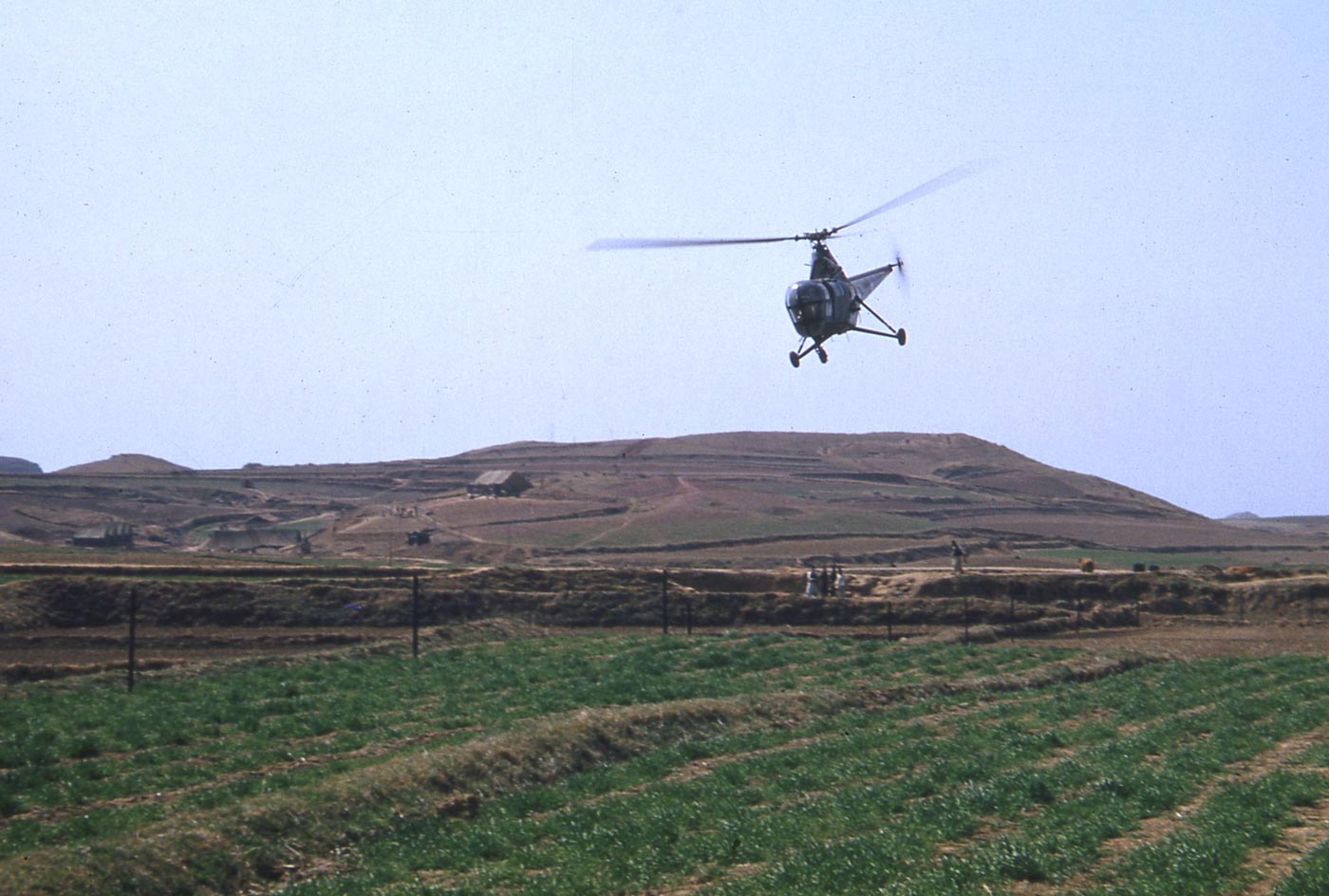
Frontal view of a Sikorsky H-5 helicopter flying over the countryside somewhere in the Republic of Korea. Image: NARA
Ugly Helicopters
That same mantra applies to Army helicopters.
I flew OH-58A/C Aeroscouts,UH-1H Hueys,CH-47D Chinooks, andAH-1S Cobra gunshipsback in the day.
That is one seriously sexy beast.
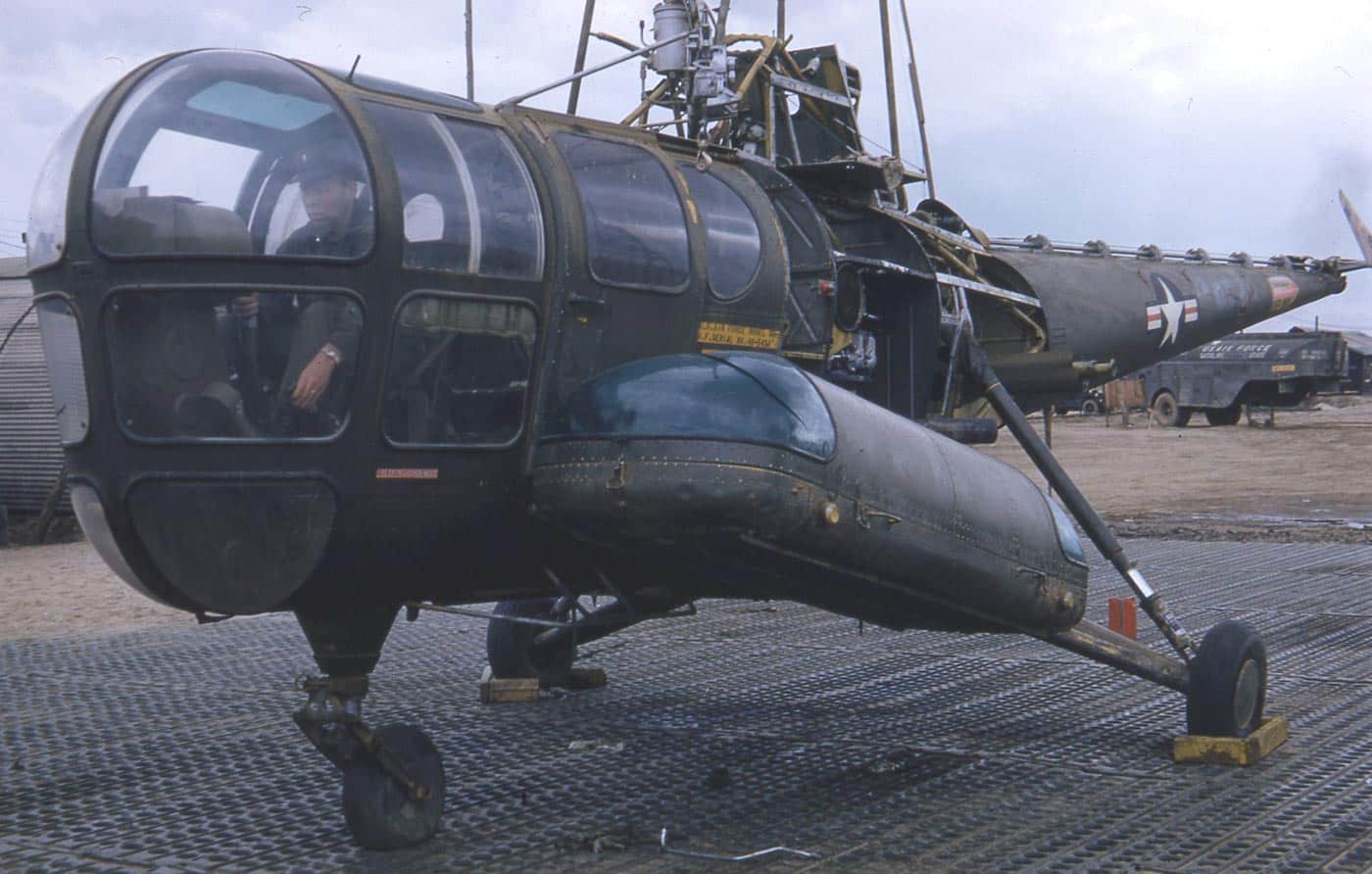
The Sikorsky H-5 helicopter had a very cramped cockpit. This particular helo has an attached litter carrier for medevac duties. Image: NARA
However, back in the mid-1940s, helicopters were not quite so viscerally attractive.
One of the homeliest of the lot was the Sikorsky H-5.
First flown on 18 August 1943, the R-5 was an evolutionary derivative of the previous ground-breaking R-4.
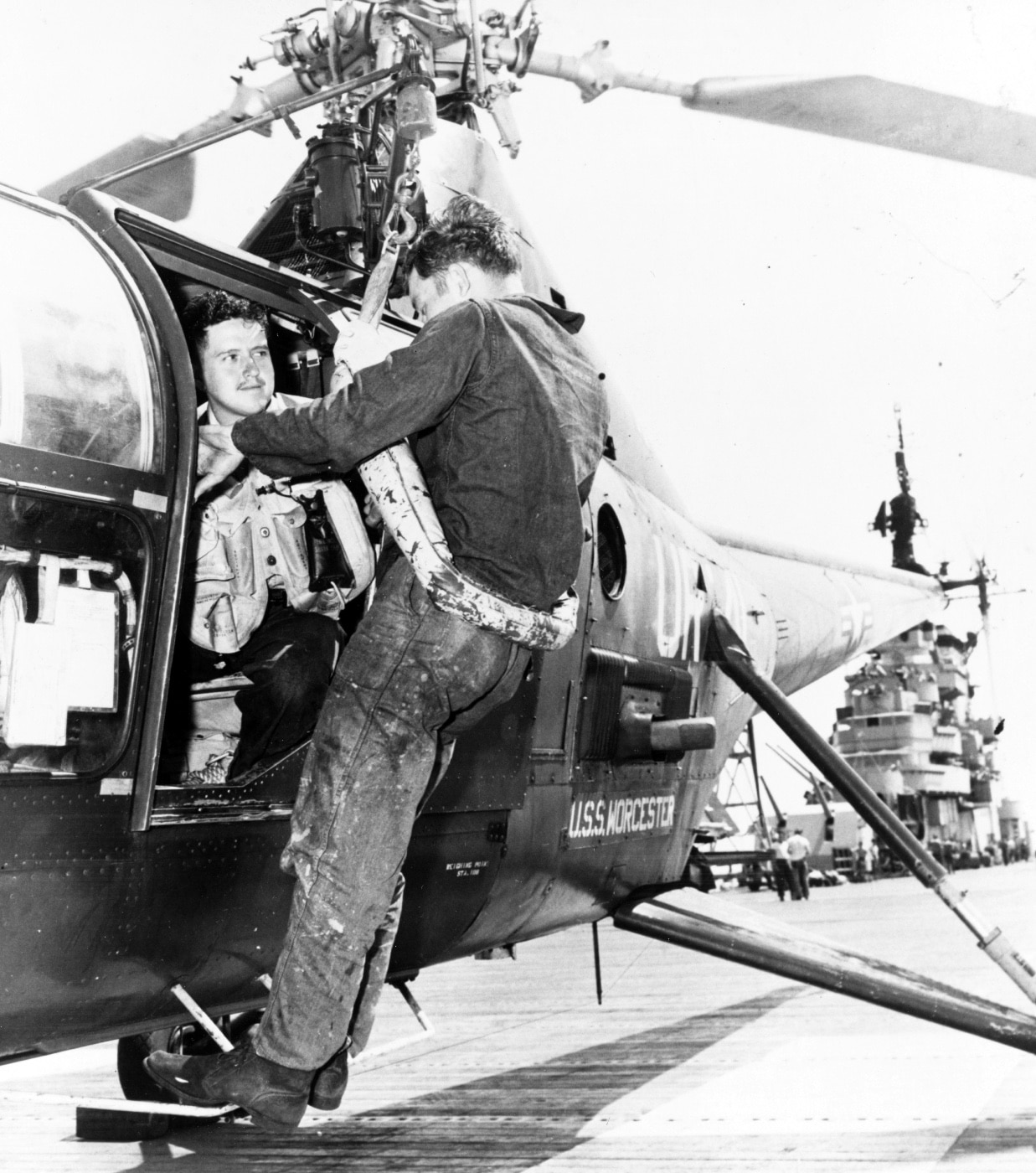
Sailors demonstrate air-sea rescue techniques aboard the USSPhilippine Sea(CV-47) anEssex-class carrierusing a Sikorsky HO3S-1 helicopter from the USSWorcester(CL-144). Image: U.S. Navy
The Sikorsky R-4 was simple to the point of being crude.
Its fuselage was constructed from welded tube stock covered in doped canvas.
It was also legendarily difficult to fly.
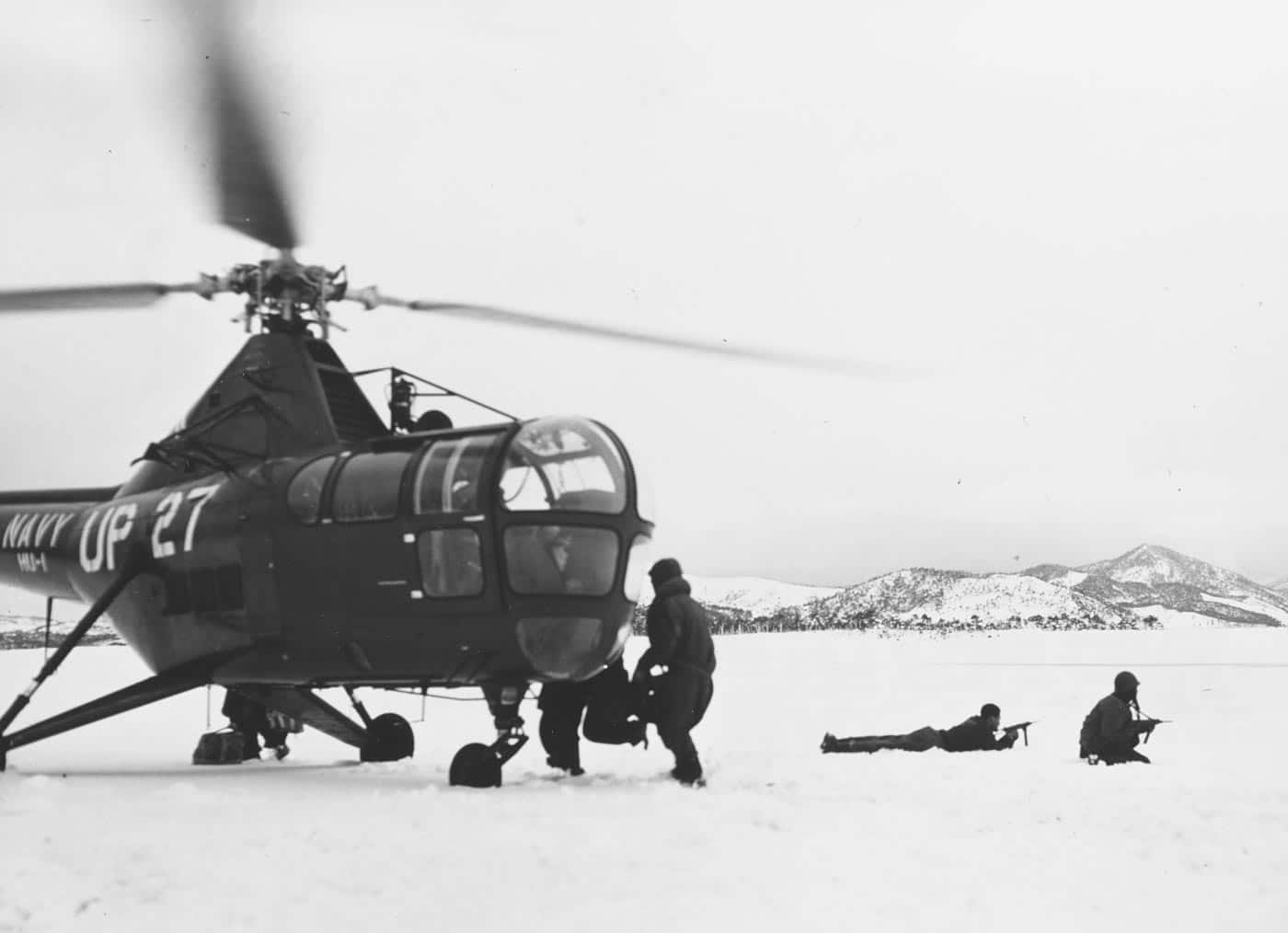
Sailors from the Thai frigate HTMSPrasaeare rescued after it ran ashore in North Korea during a snowstorm. Men guarding the rescue operation are armed withM3 submachine guns. Image: U.S. Navy
Detractors referred to the R-4 as the Flying Washing Machine.
However, the R-4 laid a foundation for much greater things to come.
By contrast, the subsequent R-5 was a serious aircraft.
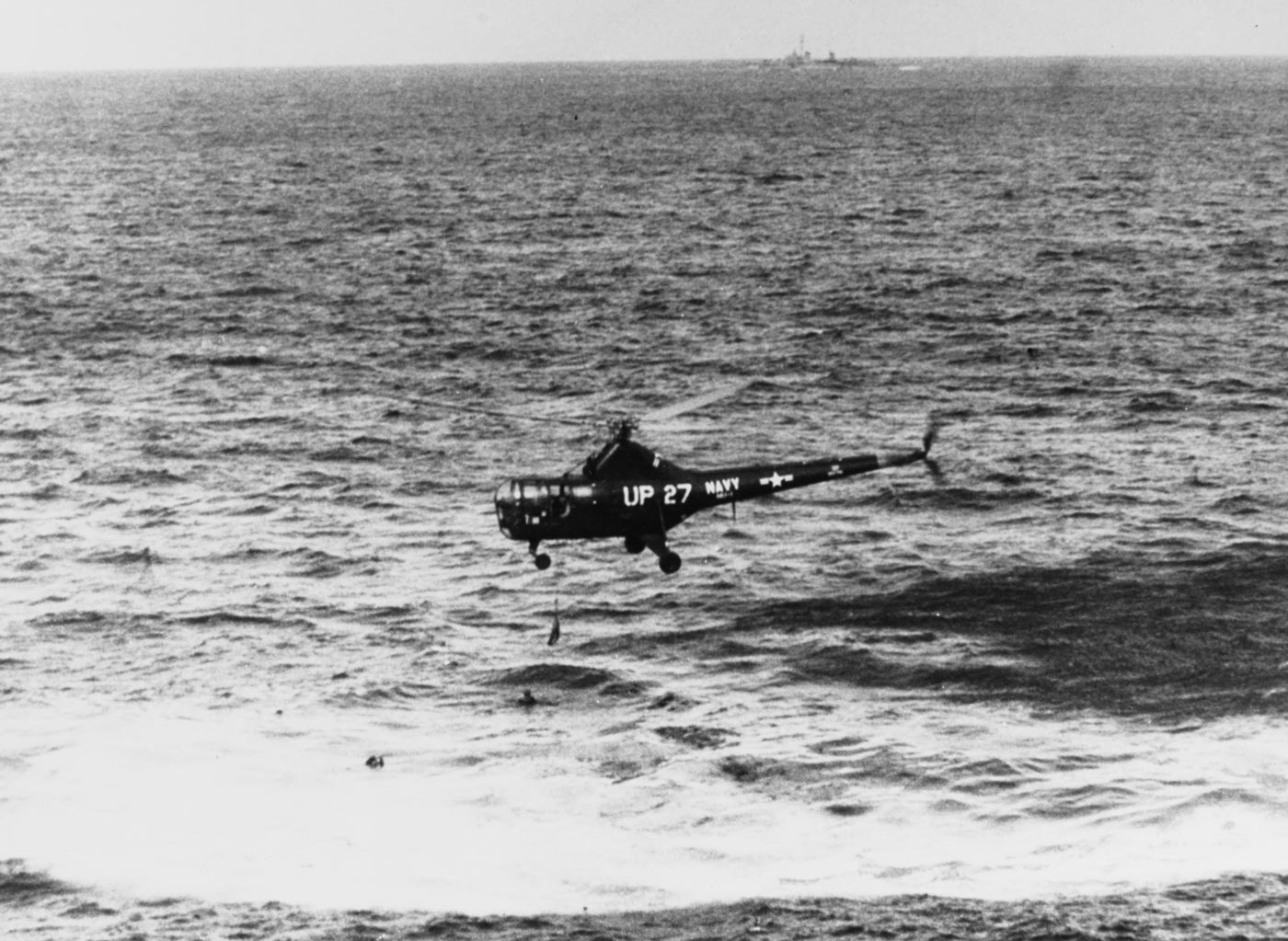
Sikorsky HO3S-1 helicopter rescues Lt. (JG) M.E. Thompson, the pilot of a Vought F4U-5N Corsair fighter that crashed on takeoff from USSPhilippine Sea. Image: U.S. Navy
More than 300 were produced between 1944 and 1951.
Details
The R-5 came in two broad flavors.
One carried two crewmen, and the other three.
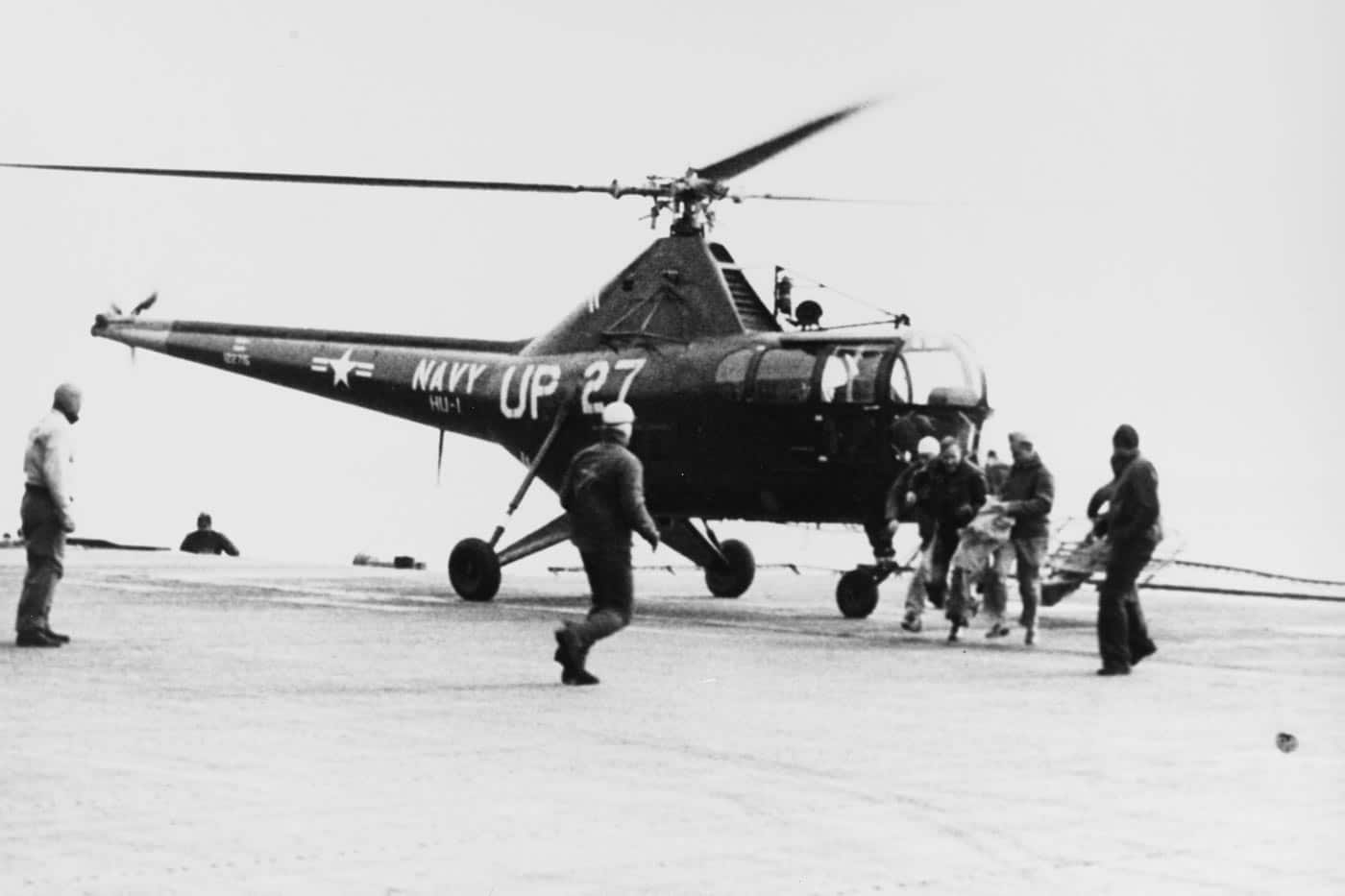
A Sikorsky HO3S-1 helicopter returns the rescued pilot of aVought F4U Corsairfighter that crashed while taking off from the carrier off the coast of South Korea in January 1951. Official U.S. Navy
Both versions were terribly cramped.
To lift those three people, they had to be in shirtsleeves.
Early versions only had one set of flight controls, though later R-5s sported two.
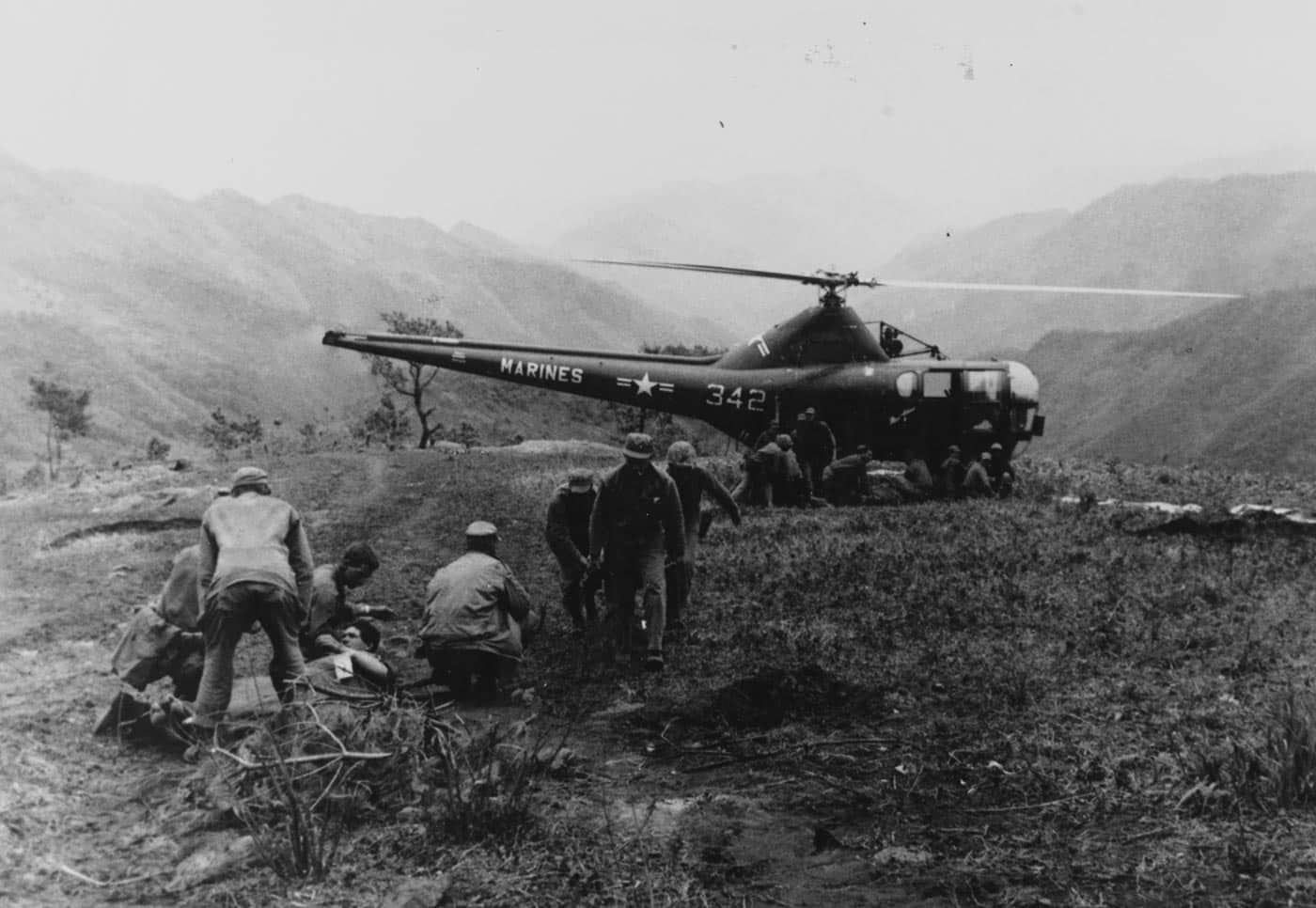
Navy corpsmen prepare three Marines wounded at Gariwangsan for evacuation by helicopter to a rear area hospital in May 1951. Image: U.S. Navy
The crewmembers sat one behind the other.
That caused all sorts of problems.
Flying machines live and die by their centers of gravity.
In the case of the R-5, the CG limits were fairly narrow.
Given that the crewmembers rode in tandem, that meant that flying the aircraft single-pilot was a nerve-wracking experience.
The answer was a pair of iron bar weights contained within canvas sacks.
One weighed 25 pounds, and the other 50.
When flying without passengers the two weights had to be secured alongside the pilot.
If operating with passengers, the weight bags were stashed back in the baggage compartment.
If they were lost or jettisoned the pilots were trained to go find a suitable rock.
For a flying machine, that is indeed glacially slow.
S-51 The First Commercial Helicopter
The civilian version of the R-5 was designated the S-51.
On 29 June 1946, the S-51 became the first rotary-wing aircraft delivered for service to a commercial operator.
Three airframes sold to Helicopter Air Transport for $48,500 apiece.
That would be about $800,000 each in todays money.
133 Dragonflies were built using British 500hp Alvis Leonides engines.
Beginning in 1950, British European Airways offered daily passenger service between Cardiff and Liverpool using their WS-51s.
Four examples saw service during Operation Highjump, the U.S. Navy Antarctic Developments Program.
The real contribution of the R-5, however, occurred on the Korean peninsula.
The Korean War was the first military conflict to see widespread use of helicopters for medical evacuation.
Final Thoughts on the H-5 Helicopter
The Sikorsky R-5 looks vaguely like an anorexic sperm whale.
It is also terribly crude by modern standards.
However, a great many pioneering aviators did just exactly that.
I was one of them.
In so doing they saved lives and pushed the boundaries of the art.
The R-5 was indeed a pioneering machine.




